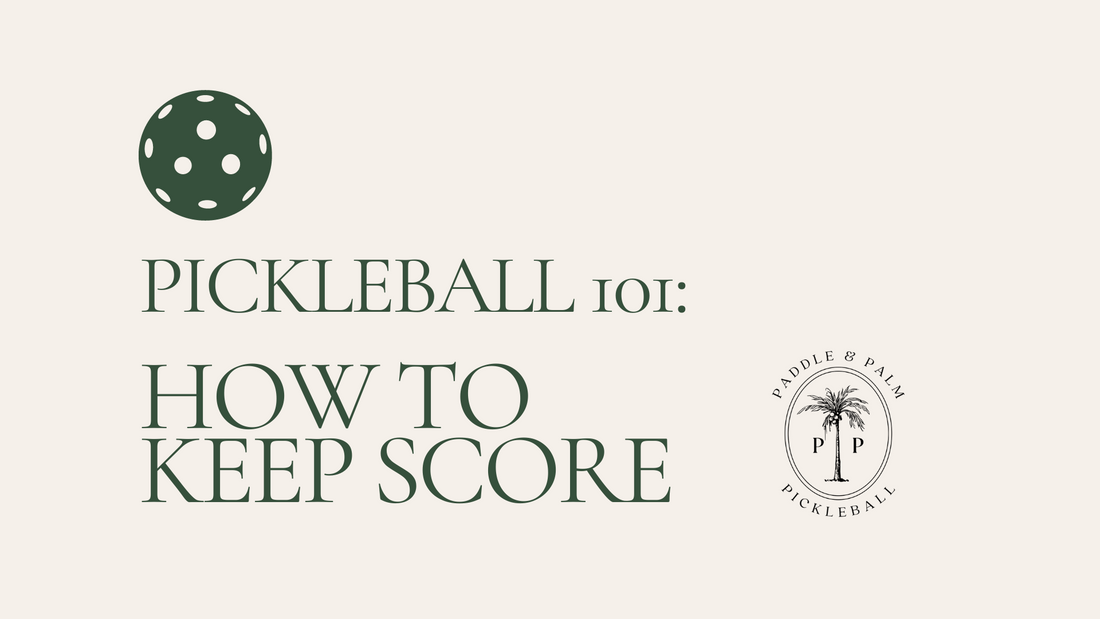
How to Keep Score
Tyler WilkieShare
One of the most commonly asked questions of new pickleball players is how to keep score. This can be a challenging task at first, but with practice is a skill that can be mastered in no time. In this guide, we will show you everything you need to know in order to keep an accurate score.
Rally Scoring vs. Traditional Scoring:
There are now two types of scoring allowed in Pickleball, thanks to the USAPA's recent adoption of rally scoring. Before the adoption of rally scoring, USAPA rules only allowed for a traditional scoring system. In traditional scoring, a point is only be awarded to the team that is serving and wins a volley. If you are the serving team and you lose the volley, neither team scores a point, and the serving possession is passed to the opposing team. In a rally scoring system, a point is awarded after every volley, regardless of which team is serving, which allows the opportunity for a team to win a point on defense. Since their a re more opportunities for scoring in a rally scoring system, games typically don't last as long.
Serving Order:
Pickleball can be played in singles or doubles. When a team is serving and their score is even, they will serve from the right side of the court. When their score is odd, they will serve from the left side of the court. The team will continue to serve until a "side-out" is declared, which means serving possession passes to the opposing team. In singles, a side-out is declared when the server faults however, in doubles, both players are given the opportunity to serve. Only once each of the players on the serving team faults is a side-out declared.
when a team playing doubles begins to serve, the player on the right side of the court is known as Server 1, and will be given the first opportunity to serve. If the serving team's score is even, Server 1 will begin the serve from the right side of the court, or left side of the court if their score is odd. If the serving team scores a point, Server 1 will switch sides of the court and serve again, making sure to always serve from the correct side depending on whether their score is even or odd. Once Server 1 faults, the serve is passed to Server 2. Once Server 2 faults, a side-out is declared and the serve passes to the opposing team.
The only exception to the serving order is at the very beginning of the game. Only Server 2 is allowed to serve, effectively giving the serving team one opportunity for a fault before a side-out is declared. Server 2 will begin the serve from the right side of the court to begin the game. Once the first side-out is declared, both servers will be allowed to serve after each side-out, until the game ends.
Scorekeeping in a doubles game:
Before each serve, the server must call out the score to the rest of the players. There are three numbers that must be said:
1. The serving team's score
2. The opposing team's score
3. Which server is serving (1 or 2).
So, if the serving player calls out a score of 3-2-1, this means that the serving team has three points, the opposing team has two points, and Server 1 is serving.
In singles, only two numbers are called out by the server (the serving team's score and the opposing team's score).
The game ends when a team reaches 11 points, at which point they will be declared the winner! With this summary on scorekeeping, you should be ready to hit the court and feel confident that you can keep an accurate score! Feel free to bookmark this guide to reference if you ever need a refresher on the basics of scorekeeping, and be sure to visit the USAPA website for other resources, including the official rulebook.
